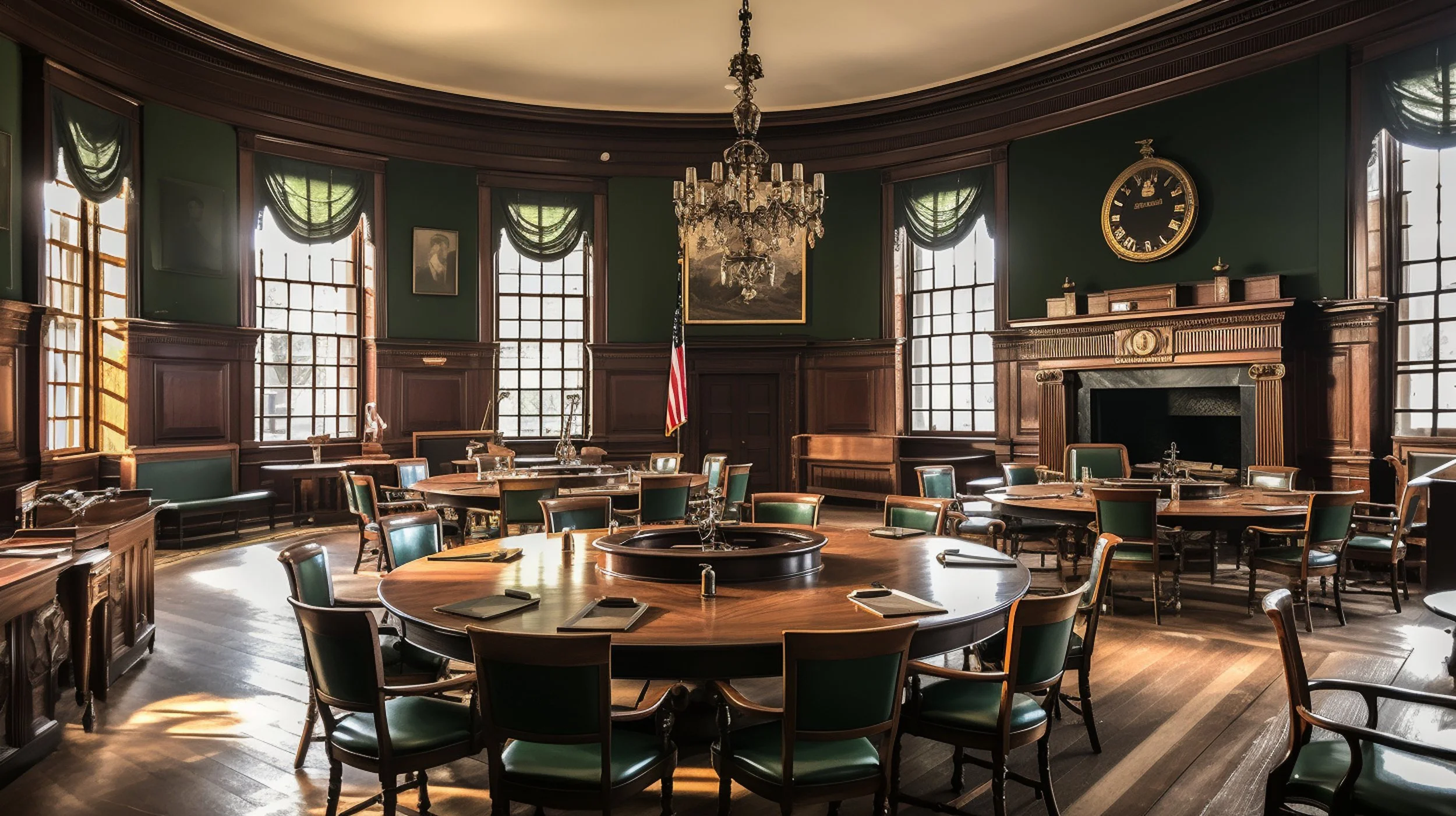On The Edge of Something New

Ben Everidge for Thomas
Photo Credit: Adobe Stock by travelview
Why the Future of American Politics Will Be Functional, Not Partisan …
Every few generations, America rewrites the rules of its own politics. Old coalitions fracture, new loyalties form, and the people, tired of dysfunction, search for a system that can deliver again.
We are living through such a moment, but the change underway today is unlike anything the country has experienced in a long, long time. The great political transformations of the past were always understood through the lens of realignment theory, a cornerstone of American political science.
Yet the upheaval we now see cannot be explained by those earlier models. What is happening in twenty-first-century America is not simply another partisan reshuffling. It is a reordering of legitimacy itself. A collective decision by millions of citizens to seek functionality over form, performance over party, and trust over tribalism. This is the heart of what I call the Theory of Civic Realignment.
What Political Realignment Once Meant
To understand what is new about our current political transformation, we must recall how scholars once understood the concept of realignment. In the mid-twentieth century, the Harvard and Yale political scientist, V.O. Key, developed what became known as Critical Realignment Theory, later refined by Walter Dean Burnham and others. They observed that roughly every thirty to forty years, American politics experiences a seismic shift in voter coalitions, party structures, and national priorities. These moments were called “critical elections” because they didn’t just change who won; they changed the rules of the game itself.
Abraham Lincoln’s election in 1860 destroyed the Whig Party and solidified the Republican Party as the dominant force of its age. Franklin Roosevelt’s victory in 1932 built the New Deal coalition, uniting industrial workers, farmers, and minorities under a promise of government as an instrument of economic recovery. Richard Nixon’s election in 1968, amid civic unrest and the Vietnam War, redrew partisan boundaries across the South and West, cementing the ideological contours of the modern Republican and Democratic parties. Each of these realignments reflected a new social order, a new economic reality, and a redefined sense of who counted as “the American people.”
However, the old realignment theories assumed that the two-party structure itself was permanent, the vessel through which all transformation had to flow. That assumption no longer holds. The container is breaking before our very eyes.
The End of the Old Cycle
In the past two decades, the indicators that once signaled stability have all begun to invert. Party identification has steadily declined; nearly half of all Americans now call themselves political independents.
Trust in government has fallen to near historic lows. Congress is paralyzed by procedural warfare, and even the judiciary, long the most respected branch of government, is now viewed through partisan lenses. National media outlets, once arbiters of shared truth, are now distrusted by majorities on both sides. The old institutions have not simply weakened; they have lost their legitimacy.
Traditional realignment theory is unable to account for this. It expects voters to switch from one party to another when discontented, rather than abandoning the entire system of partisanship. Yet that is precisely what is happening. Americans are not retreating from politics. They are migrating their trust to new, more functional forms of civic engagement. This phenomenon, the migration of legitimacy, forms the foundation of my Theory of Civic Realignment.
The Migration of Legitimacy
Legitimacy migration occurs when citizens cease to believe that traditional political institutions can or will act in their best interest, and instead place their trust in alternative networks, such as local governments, community organizations, nonprofits, veteran coalitions, small businesses, or even individual civic leaders who demonstrate competence and honesty.
The evidence is everywhere. Polling consistently shows that Americans trust their mayors more than their senators, their local news more than national cable networks, and their employers more than Congress. They are not rejecting government altogether; they are redefining where governance resides. Authority, in this sense, is moving from Washington to the neighborhood, from party headquarters to the places where things still work.
This shift explains why independents are now the largest “party” in America.
These voters do not see themselves as apathetic or disinterested; they are, in fact, highly engaged but deeply skeptical that the partisan system can deliver results. They are functionalists in a symbolic age - citizens who measure politics by what it accomplishes rather than what it signals. For them, a government that works is more patriotic than one that merely argues.
Civic Identity Politics
Much has been written in recent decades about the rise of identity politics. The idea that voters define themselves by race, gender, class, or ideology. But a quieter, more powerful force has begun to emerge: civic identity politics.
Instead of organizing around what they are, people are beginning to organize around what works. This civic identity is functional rather than tribal. It forms when citizens see a local institution solve a problem that Washington cannot, or when they join a cause that transcends party lines. It is the identity of the volunteer firefighter, the independent mayor, the nurse, or the small business owner who refuses to wait for Congress to fix what needs fixing. It is a politics of problem-solvers rather than performers.
Civic identity politics has the potential to reshape the political landscape just as profoundly as the New Deal once did. It marks the arrival of a post-partisan citizenry of people who expect their leaders to function with competence rather than conform to ideology. The next American majority may not be Democratic or Republican. It may be Functionalist.
Functionalists and Symbolists
The central divide in American politics is no longer left versus right. It is between those who demand functionality and those who mistake symbolism for substance.
Functionalists define politics as a mechanism for solving problems, improving systems, and delivering tangible outcomes. They value collaboration, transparency, and performance.
Symbolists, on the other hand, treat politics as a means of expressing identity. For them, politics is theater - a display of loyalty, outrage, or moral superiority. In a Symbolist world, success is measured by the applause of one’s tribe, not by whether the problem was solved.
This new divide cuts across both major parties. There are Functionalists and Symbolists among Democrats, Republicans, and independents alike. The difference lies not in ideology but in purpose. Functionalists see governance as an act of service. Symbolists see it as a form of combat. My theory, the Everidge Theory, predicts that as institutional trust continues to decline, the Functionalists will increasingly operate outside of party structures, forming civic networks that achieve legitimacy through performance rather than rhetoric.
Toward a Post-Partisan Equilibrium
When a political system becomes so polarized that it can no longer govern, it must either collapse or evolve toward a new equilibrium. That evolution, the emergence of what I call the post-partisan equilibrium, is already underway. Across the country, mayors and governors are building bipartisan coalitions to solve infrastructure, housing, and environmental challenges.
Nonprofits and private enterprises are filling policy gaps to deliver social services that the government once handled. Voters, tired of gridlock, are rewarding competence wherever they can find it. What binds these efforts together is not ideology but performance. America is slowly and unevenly learning to measure legitimacy by outcomes again.
This shift does not herald the end of democracy but its renewal. The Founders designed a Republic based on representation. The modern era, on the other hand, demands a Republic based on function.
Representation without performance is no longer enough. The public will tolerate ideological diversity but not operational failure. In that sense, the post-partisan equilibrium is not a utopian ideal. It is a survival mechanism instead.
The Functional Republic
The logical conclusion of this transformation is what I call the Functional Republic. A political order in which legitimacy derives from what works, not who wins. In a Functional Republic, transparency becomes a patriotic duty rather than a talking point. Accountability is measured not by rhetoric but by results. Localism becomes the seedbed of national renewal, and civic participation replaced partisan posturing as the primary measure of democratic health.
The institutions that thrive will be those that can demonstrate competence in the face of complexity, and the leaders who endure will be those who can deliver measurable outcomes without hiding behind ideology.
The Functional Republic is not a rejection of America’s founding principles. It is their fulfillment. Thomas Jefferson and James Madison built a system that prized reasoned representation, deliberation, and the diffusion of power. What has corroded those ideals is not democracy itself but dysfunction. My theory proposes that democracy can be rebuilt not by doubling down on partisanship, but by re-establishing performance as the source of legitimacy.
The Next American Revolution Will Be Civic
If economic crises or moral awakenings drove the realignments of the past, this one is being driven by a crisis of function. Americans no longer trust the system to deliver the basic goods of self-government, such as justice, efficiency, fairness, and truth.
The old order cannot be reformed from within because it has become self-referential, sustained by conflict rather than resolution. The new order will not arise from a new ideology but from a rebirth of civic competence. It will come from citizens, entrepreneurs, educators, local officials, and independent leaders who build trust through results. It will come, in other words, from Function.
The Everidge Theory of Civic Realignment does not predict the end of American democracy. It predicts its reconstruction through proximity, performance, and purpose. The next American revolution will not be fought between Democrats and Republicans, despite how it might look today. It will be fought between those who believe in the functionality of the Republic and those who profit from its dysfunction. It will not be partisan. It will be civic.




